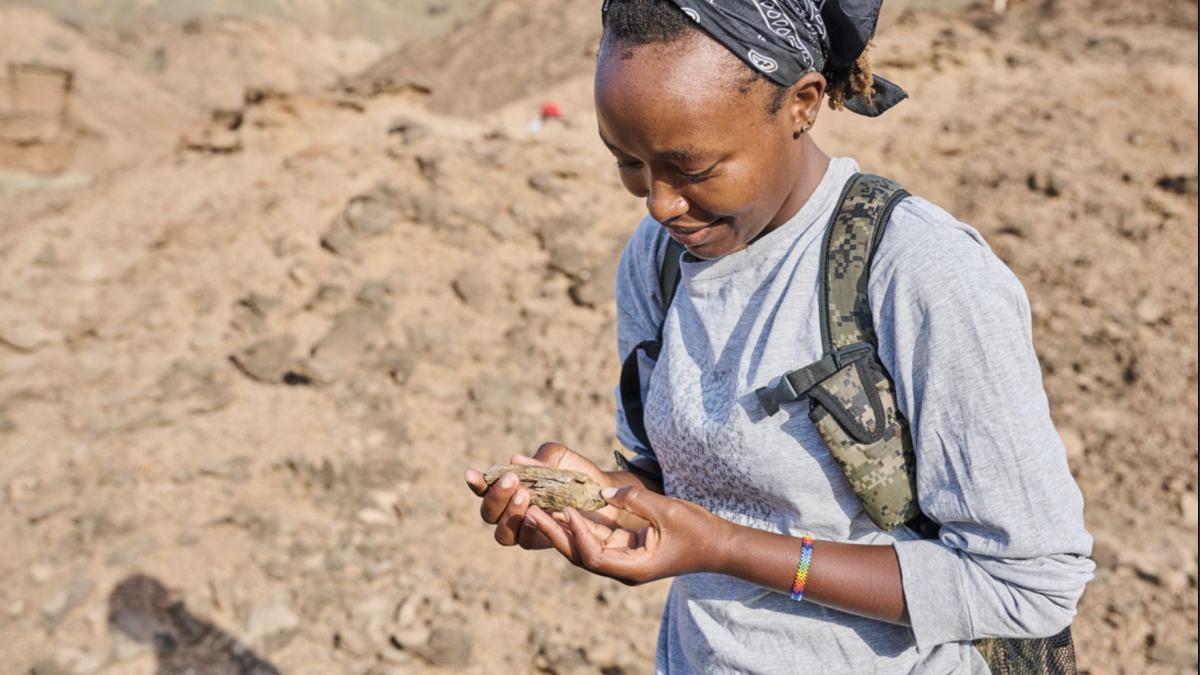Sankau aims to create a comprehensive narrative of climatic change, seasonality, and vegetation evolution, providing key insights into the evolution of our species.
In the pursuit of unraveling the mysteries of our planet’s distant past, Arizona State University’s Linet Sankau, a Ph.D. student in the School of Human Evolution and Social Change, is leading groundbreaking research that involves analyzing chemical elements extracted from tooth enamel powder of animal remains.
Sankau’s work provides insights into the environmental conditions of areas millions of years old and holds the potential to shed light on climate change that occurred in Africa around 10 million years ago.
Sankau’s current focus lies on reconstructing the paleoecology of the late Miocene site, Lothagam, in Kenya. This period, approximately 10 million years ago, is crucial as it is believed to be the time when the last common ancestor of humans and chimpanzees existed.
Additionally, it marks the emergence of grasses, adding significance to the study of evolutionary history. By meticulously examining mammalian diets and understanding evolutionary pressures, Sankau aims to create a comprehensive narrative of climatic change, seasonality, and vegetation evolution, providing key insights into the evolution of our species.
ASU News recently engaged in a conversation with Sankau to delve deeper into her research and its implications for understanding our planet’s history.
Journey to Unearth the Past
Linet Sankau’s journey into the realm of paleoecology began with an undergraduate background in history and archaeology at Maseno University in Kenya.
After three years of working in the paleontology section of the museum in Nairobi, she pursued a master’s program in human evolutionary biology at Turkana University College. Her master’s research focused on reconstructing the dietary niches and behaviors of fossil bovids during the late Miocene period at the Lothagam site.
Driven by a passion for understanding our origins, Sankau decided to further her research through a PhD at the School of Human Evolution and Social Change. Her doctoral studies aim to extend the focus beyond bovids to investigate the dietary behaviors of all large herbivores from the same site, offering a more comprehensive understanding of ecological fluctuations during that pivotal period.
Decoding Ancient Environments through Paleoecology
At the heart of Sankau’s research is the field of paleoecology, a discipline that involves reconstructing ancient environments. The key method employed is stable isotope analysis, which allows researchers to extract enamel powder from animal teeth and analyze isotopic signals.
These signals, left by an animal’s diet throughout its life, enable scientists to deduce crucial information such as the type of diet (grazer, browser, or generalist) using carbon isotopes and the amount of precipitation in the environment using oxygen isotopes.
Beyond tooth enamel powder, other fossil bones provide additional clues about an animal’s behavior, such as whether it was a climber, terrestrial runner, or swimmer. By examining the relative abundance of species in an environment, researchers can infer the type of habitat, such as a forest or an area with abundant trees.
In essence, paleoecology allows scientists to paint a detailed picture of ancient ecosystems and the behaviors of the organisms that inhabited them, providing a window into the past that can inform our understanding of evolution.
Collaborative Expertise at ASU
Sankau’s research benefits from the collaboration with experienced faculty members at the School of Human Evolution and Social Change. Chris Campisano and Denise Su, both associate professors, bring their expertise in paleoecology and related sciences to the project.
Campisano specializes in reconstructing terrestrial paleoenvironments by combining geological and fossil hominin records. This integration creates a temporal-spatial environmental framework, facilitating the testing of theories related to hominid and faunal evolution across Africa, Asia, and North America.
Su focuses on reconstructing the paleoecology of early hominins, aiming to understand the environments inhabited by our early ancestors and how environmental factors influenced hominin evolution. Her research spans various African sites, contributing significantly to the exploration of paleoecological aspects in the context of human evolution.
Unveiling the Past for Future Insights
Sankau’s decision to focus on paleoecology stems from a deep curiosity about human origins and a desire to actively participate in research spanning millions of years. By concentrating on the environmental aspect, she recognizes the opportunity to observe the profound impact that present-day environments have on existing flora and fauna.
The importance of this research becomes evident in its ability to offer a historical perspective on the selective pressures that our species and other coexisting species experienced. In a world grappling with the consequences of contemporary climate change, understanding climatic conditions and species responses from the past becomes crucial.
Sankau emphasizes that this research, despite providing a narrow glimpse into the past, contributes valuable lessons for addressing and mitigating the impacts of present-day climate change. By learning from historical perspectives, we gain insights that can inform environmental decisions and strategies, offering a bridge between the past and the future.
In essence, Linet Sankau’s work is not just about unraveling ancient mysteries but about leveraging the past to illuminate a path forward in our ongoing quest to comprehend and address the challenges of a changing climate.
